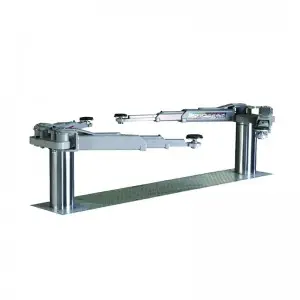Cylinders have a long and fascinating history that dates back to ancient times. Derived from the Greek word “kulindros,” meaning a roller or spindle, cylinders have played a significant role in various civilizations and have found their way into numerous applications, both in ancient times and in modern engineering.
The ancient Greeks were among the first to recognize the unique properties of cylinders and utilize them in a wide range of applications. They were used in the construction of the iconic architectural masterpiece, the Parthenon, in Athens. The cylindrical shape of the columns not only provided structural support but also created a sense of grandeur and beauty. The concept of the cylinder was also embraced by other ancient civilizations, such as the Egyptians, who used cylindrical columns in their magnificent temples and structures.

The Fascinating History and Versatile Uses of the Cylinder: From Ancient Greece to Modern Engineering
In addition to architecture, ancient civilizations recognized the practical applications of cylinders. The Egyptians, for instance, used cylindrical seals to mark documents and create unique impressions. These seals played an essential role in administrative and legal matters, ensuring the authenticity and authority of the documents.
Fast forward to the modern era, and cylinders have become an integral part of engineering and manufacturing processes. With advancements in technology and materials, cylinders have found versatile uses, particularly in hydraulics and pneumatics. Hydraulic cylinders, for instance, are widely used in heavy machinery, construction equipment, and automotive applications.

The Fascinating History and Versatile Uses of the Cylinder: From Ancient Greece to Modern Engineering
One of the most common hydraulic cylinder designs is the single-rod cylinder. It consists of a piston rod connected to a movable cylinder barrel, with hydraulic fluid enabling the reciprocating motion. These cylinders can generate a tremendous amount of force, making them ideal for heavy-duty applications. They are used in construction equipment such as cranes, bulldozers, and excavators, where high power is necessary to lift heavy loads and carry out demanding tasks.

The Fascinating History and Versatile Uses of the Cylinder: From Ancient Greece to Modern Engineering
Pneumatic cylinders, on the other hand, operate using compressed air and are extensively used in automation and manufacturing industries. They offer quick and precise linear motion and are a popular choice for applications that require repetitive and high-speed movements. Pneumatic cylinders are commonly found in assembly lines, packaging machines, and robotics, where their compact design and efficient operation are highly valued.
Beyond engineering, cylinders have also made their mark in the world of science. In physics, the concept of the cylinder is utilized in the study of geometric shapes and solids. A cylinder can be defined as a three-dimensional object with two parallel circular bases connected by a curved surface. This definition allows scientists to analyze and calculate the volume, surface area, and various other properties of cylinders, providing valuable insights into the principles of geometry and physics.
In conclusion, cylinders have a rich and diverse history, spanning from ancient civilizations to modern engineering. From the majestic columns of ancient Greece to the powerful hydraulic and pneumatic cylinders of today, their uses have evolved and expanded over time. Cylinders continue to play a crucial role in various industries, offering practical solutions to complex engineering challenges and contributing to advancements in science and technology.New Engery Vehicle Battery Lift
